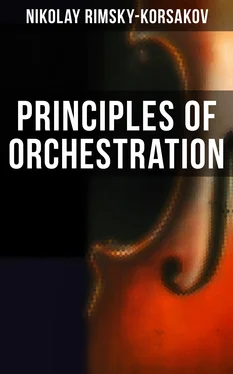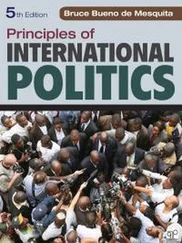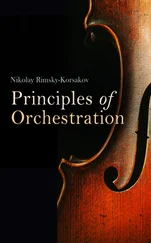The five sets of strings with number of players given above produce a fairly even balance of tone. If there is any surplus of strength it must be on the side of the first violins, as they must be heard distinctly on account of the important part they play in the harmonic scheme. Besides this, an extra desk of first violins is usual in all orchestras, and as a general rule they possess a more powerful tone than second violins. The latter, with the violas, play a secondary part, and do not stand out so prominently. The 'cellos and double basses are heard more distinctly, and in the majority of cases form the bass in octaves.
In conclusion it may be said that the group of strings, as a melodic element, is able to perform all manner of passages, rapid and interrupted phrases of every description, diatonic or chromatic in character. Capable of sustaining notes without difficulty, of playing chords of three and four notes; adapted to the infinite variety of shades of expression, and easily divisible into numerous sundry parts, the string group in an orchestra may be considered as an harmonic element particularly rich in resource.
B. Wind instruments.
Wood-wind.
Apart from the varying number of players, the formation of the string group, with its five constituent parts remains constant, satisfying the demands of any orchestral full score. On the other hand the group of wood-wind instruments varies both as regards number of parts and the volume of tone at its command, and here the composer may choose at will. The group may be divided into three general classes: wood-wind instruments in pair's, in three's and in four's, (see table on page 13 Arabic numerals denote the number of players on each instrument; roman figures, the parts (1st, 2nd etc.). Instruments which do not require additional players, but are taken over by one or the other executant in place of his usual instrument, are enclosed in brackets. As a rule the first flute, first oboe, first clarinet and first bassoon never change instruments; considering the importance of their parts it is not advisable for them to turn from one mouth-piece to another. The parts written for piccolo, bass flute, English horn, small clarinet, bass clarinet and double bassoon are taken by the second and third players in each group, who are more accustomed to using these instruments of a special nature. Wood-wind in pair's Wood-wind in three's Wood-wind in four's (II—Piccolo). (III—Piccolo). 1 Piccolo (IV). 2 Flutes I. II. 3 Flutes I. II. III. 3 Flutes I. II. III. (II—Bass flute). (III—Bass flute). 2 Oboes I. II. 2 Oboes I. II. 3 Oboes I. II. III. (II—Eng. horn). 1 Eng. horn (III). 1 Eng. horn (IV). (II—Small clarinet). (II—Small clarinet). 2 Clarinets I. II. 3 Clarinets I. II. III. 3 Clarinets I. II. III. (II—Bass clarinet). (III—Bass clarinet). 1 Bass clarinet (IV). 2 Bassoons I. II. 2 Bassoons I. II. 3 Bassoons I. II. III. 1 Double bassoon (III). 1 Double bassoon (IV). The formation of the first class may be altered by the permanent addition of a piccolo part. Sometimes a composer writes for two piccolos or two Eng. horns etc. without increasing the original number of players required (in three's or four's).
).
Arabic numerals denote the number of players on each instrument; roman figures, the parts (1st, 2nd etc.). Instruments which do not require additional players, but are taken over by one or the other executant in place of his usual instrument, are enclosed in brackets. As a rule the first flute, first oboe, first clarinet and first bassoon never change instruments; considering the importance of their parts it is not advisable for them to turn from one mouth-piece to another. The parts written for piccolo, bass flute, English horn, small clarinet, bass clarinet and double bassoon are taken by the second and third players in each group, who are more accustomed to using these instruments of a special nature.
| Wood-wind in pair's |
Wood-wind in three's |
Wood-wind in four's |
| (II—Piccolo). |
(III—Piccolo). |
1 Piccolo (IV). |
| 2 Flutes I. II. |
3 Flutes I. II. III. |
3 Flutes I. II. III. |
|
(II—Bass flute). |
(III—Bass flute). |
| 2 Oboes I. II. |
2 Oboes I. II. |
3 Oboes I. II. III. |
| (II—Eng. horn). |
1 Eng. horn (III). |
1 Eng. horn (IV). |
|
(II—Small clarinet). |
(II—Small clarinet). |
| 2 Clarinets I. II. |
3 Clarinets I. II. III. |
3 Clarinets I. II. III. |
| (II—Bass clarinet). |
(III—Bass clarinet). |
1 Bass clarinet (IV). |
| 2 Bassoons I. II. |
2 Bassoons I. II. |
3 Bassoons I. II. III. |
|
1 Double bassoon (III). |
1 Double bassoon (IV). |
The formation of the first class may be altered by the permanent addition of a piccolo part. Sometimes a composer writes for two piccolos or two Eng. horns etc. without increasing the original number of players required (in three's or four's).
Конец ознакомительного фрагмента.
Текст предоставлен ООО «ЛитРес».
Прочитайте эту книгу целиком, купив полную легальную версию на ЛитРес.
Безопасно оплатить книгу можно банковской картой Visa, MasterCard, Maestro, со счета мобильного телефона, с платежного терминала, в салоне МТС или Связной, через PayPal, WebMoney, Яндекс.Деньги, QIWI Кошелек, бонусными картами или другим удобным Вам способом.












